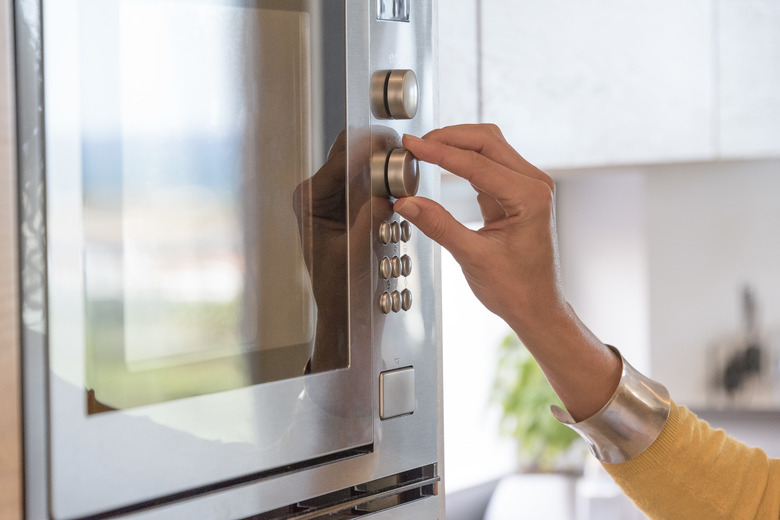The Best Venting For Over-The-Range Microwaves
We may receive a commission on purchases made from links.
When considering the best venting in an over-the-range microwave, options include ducted vents and recirculating vents. Ultimately, the goal of the vent is to pull the air from the microwave and deposit it outside of your home. This prevents smoke, cooking odors, moisture and hot air from remaining in the kitchen. For this reason, vent ducts are the ideal choice for venting over-the-range microwaves.
Ducted Vents vs. Recirculating Vents
Ducted Vents vs. Recirculating Vents
A ducted vent actually carries air from the microwave through an installed duct to the outside of the house. A fan in the duct draws air from the microwave through the duct and deposits it outside. A recirculating vent, on the other hand, simply sucks in the air from the microwave and recirculates it through a filter back into the kitchen.
Some recirculating vents contain a charcoal filter to eliminate odors and reduce heat, but for the most part, they are ineffective at ridding the kitchen of hot, moist air from the microwave. As Proline Range Hoods points out, ducted vents are far more efficient at eliminating odors, smoke and steam. Unless it is prohibitively expensive or the building structure doesn't allow it, a ducted vent is the only way to go.
Installing Ducted Vents
Installing Ducted Vents
If you've decided to install a ducted vent that connects to the outside, you'll need to choose an exhaust vent with a ducted hood. Start by putting the template or the duct mounting plate against the wall and use a drywall-specific saw to cut a hole in the opening. Cut out the exterior hole in the wall and pull out any siding that needs to be removed before you install the vent hood.
Place the exhaust adapter from the microwave into the duct as indicated in the instruction manual, making sure it lines up with the mounting plate and the house duct. Line the microwave up with the duct and connect it.
Install the exterior vent hood per the instruction manual. Be sure to use Tyvek or something similar to seal it and prevent water from entering the channel.
Fan's CFM Rating
Fan's CFM Rating
The fans inside a ducted vent are measured by CFM, or cubic feet per minute, the volume of air they move per minute. Fans vary in quality and intensity. A quiet, low-power fan may move air at a rate of 170 CFM, whereas a more powerful fan may operate at a 400 CFM velocity.
Some higher-quality fans boast heat sensors that are built into the fan itself and will automatically shut the fan off if it senses that the unit is getting overheated. Other CFM fans contain a charcoal filter similar to the type in the recirculating fan, which helps to eliminate heat, odors and smoke.
Looking for a fan like this is an especially good idea if you have limited kitchen space as it will likely make a considerable difference in the quantity of odor and smoke left in the kitchen. Choosing a fan with a high CFM will likely cost more, but it is worth the investment in small kitchens or in homes with substantial microwave use.
